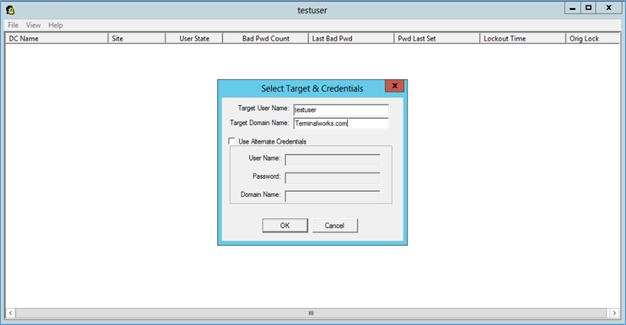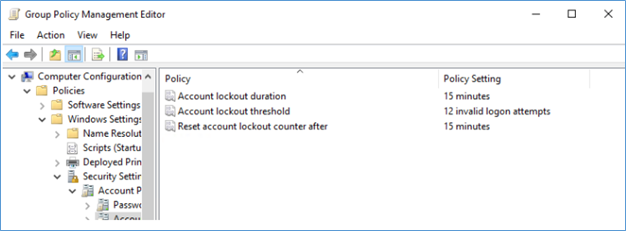

- #Windows doamin event account locked how to#
- #Windows doamin event account locked password#
- #Windows doamin event account locked windows#


You may view a user’s FGPP in PowerShell with: Get-ADUserResultantPasswordPolicy username. FGPPs take precedence over the domain-wide GPO.
#Windows doamin event account locked password#
FGPP allows an administrator to set different password policies for various groups, such as privileged administrator accounts that require more restrictive settings, than what is configured for the entire domain using GPO.
#Windows doamin event account locked windows#
Warning: If your company uses Fine-Grained Password Policies (FGPP) introduced with Windows Server 2008, the above commands may not reflect the password policy actually applied to individual accounts or Global Groups. PowerShell: Get-ADDefaultDomainPasswordPolicy -Server domain.PowerShell: Get-ADDomain -Server domain | Select -ExpandProperty distinguishedName | Get-ADObject -Property lockoutThreshold.Command Prompt: dsquery * -filter “(objectCategory=domain)” -attr lockoutThreshold.A value of 0 means the account will never be locked. Here are two ways to quickly find the configured, Domain-wide threshold. # Get the PDC Emulator for "name" (either AD Domain or Domain Controller) PowerShell # Get the PDC Emulator for the current AD domain The PDC Emulator can be found through multiple ways, and my preferred one is via the command line:Ĭommand Prompt: nltest /dclist: name (where name is the AD Domain name) The key here is that every lockout is known by the PDC Emulator. If the badPwdCount has met the Account Lockout Threshold, the DC will lock the account, record Event ID 4740 (more on that later) to its Security log, and notify the other Domain Controllers of the locked state. If it is still incorrect, the PDC Emulator increments the badPwdCount attribute of the account, and an invalid login is recorded to a Security Event Log. The PDC Emulator always holds the account’s most recent password, and so it will re-check the provided password against its own database. What Happens During a Lockout?īehind the scenes, when an incorrect password was provided for an account, the Domain Controller that it authenticated to relays the request to the DC holding the “ PDC Emulator” role. This is an important security step to frustrate an unauthorized person from gaining access. If you mistype your password three times, for example, it would be locked for a specified time or until an administrator unlocks. The latter controls when an account is locked after a set number of failed login attempts. To secure the company network, Active Directory uses Group Policy Objects (GPOs) to define various user- and computer-related settings, including password policies and the Account Lockout Threshold. A Domain Controller (DC) is the server that contains a copy of the AD database and is responsible for the replication of said data between all other DCs within the Domain. You are given a user account (often referred to as your "network login") to access what has been made available to you. Enterprises use AD to authenticate, authorize, secure, and audit access within a security boundary - a Domain - to file servers, computers, emails, and more. Microsoft's Active Directory (AD) is a service that governs how resources can be utilized by a collection of users, groups, and computers. Let's look at what Active Directory is and how network logins are related.
#Windows doamin event account locked how to#
BonusĪs an added bonus, I have included information on how to look up when an account was modified, disabled, enabled, unlocked, password reset - and by whom. For investigating Group-related events, see my Group and Membership Changes post. Related: Visualize Account Lockout events (above screenshot) with my AD Lockout Splunk Dashboards to graphically identify patterns.


 0 kommentar(er)
0 kommentar(er)
